The Australian Outback is a vast, remote region that offers a unique experience. Endless red deserts, dramatic landscapes, and ancient cultural heritage are the soul of Australia.
Vast, mysterious, and breathtakingly beautiful, the Australian Outback is one of Earth's most compelling travel destinations. Stretching across most of the continent’s interior, it’s a place where nature reveals its raw power and cultural roots run deep. Whether you’re drawn by the towering red rock monoliths or the untamed wildlife, the Outback is a living canvas of wonder. This is not just a place for sightseeing; it’s a journey through Australia’s ancient spirit, where every trail, canyon, and open plain tells a story.
For travellers with a thirst for adventure, the Outback promises a rare blend of serene isolation and thrilling exploration. It’s where you’ll find silence so vast it hums, star-studded skies that stretch to infinity, and people who’ve learned to live in harmony with one of the world’s most extreme environments. Let’s begin our journey through this awe-inspiring terrain by understanding its vast scope and distinct features.
Getting to know the Outback
Heading into the Australian Outback is like stepping into a whole new world. This vast and rugged land gives you a glimpse of nature’s beautiful rawness, plus a peek into Australia’s rich history. Here’s a little more about what the Outback is all about.

What Is the Outback?
The Outback is a term used to describe Australia's remote and arid interior regions. It is a landscape characterized by its red earth, sparse vegetation, and extreme weather conditions. The Outback covers a significant portion of Australia, stretching across multiple states and territories. Here are some key aspects of the Outback:
- Size: The Outback is massive, covering over 2.5 million square miles, making it one of the biggest natural areas in the world.
- Population: Surprisingly, it’s pretty empty, with less than 60,000 people living there.
- Climate: It can get really hot, with summer temps hitting up to 50°C, and winter nights can drop below freezing.
But the Outback isn’t just a desert. It has all sorts of ecosystems, like grasslands, woodlands, and swamps. This mix supports some amazing wildlife and plant life you won’t find anywhere else.
The Outback has been home to Indigenous Australians for ages, and you can still see their strong connection to the land in their art, culture, and traditions today. If you visit, you’ll feel a sense of solitude and vastness that’s hard to find anywhere else. Those endless horizons and starry skies are seriously breathtaking and offer a peaceful break from the hustle and bustle of everyday life.
And that sense of peace doesn’t mean things are easy. The Outback has its own rhythm. It demands respect—from its climate, from its distance, and from its rugged terrain. But the rewards are immense for those who take the time to understand it.
Awe-inspiring geographical features
The Outback’s landscapes are shaped by millions of years of geological evolution, creating a dramatic variety of terrain. From towering sandstone monoliths to ancient rivers that rarely flow, these features define the character of the land.
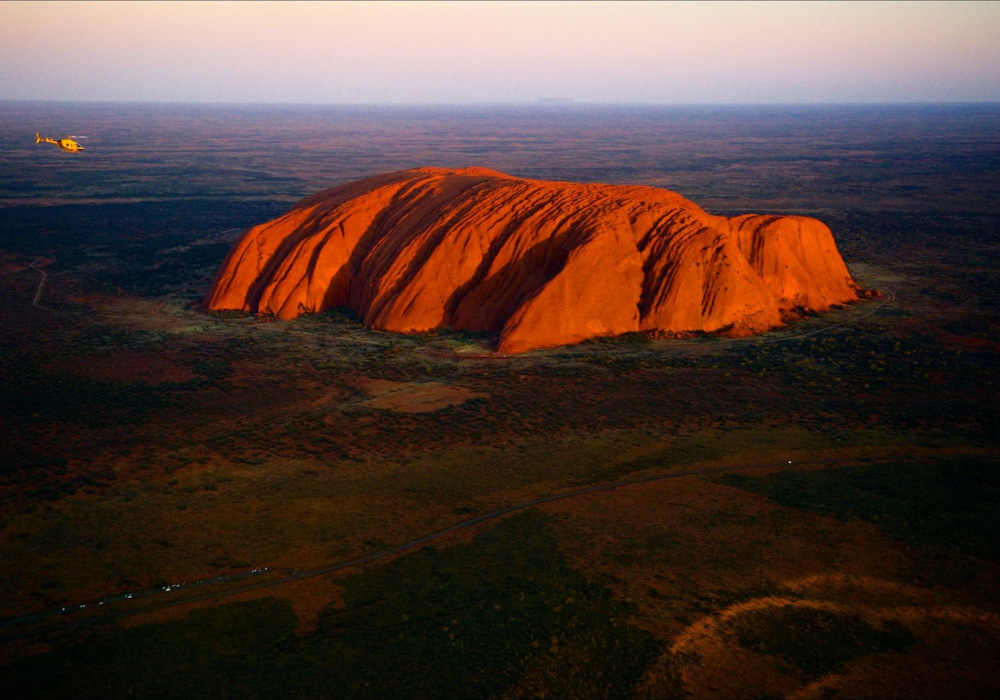
Some of the most iconic include:
| Feature | Description |
|---|---|
| Uluru | A massive sacred sandstone monolith that changes colours with the light. It is located in the Northern Territory and holds central spiritual significance to the Indigenous Anangu people. |
| Kata Tjuta | A series of large, rounded rock formations near Uluru offering mesmerizing views and challenging hikes. |
| Simpson Desert | Known for its giant red sand dunes, this desert spans across three states: Northern Territory, South Australia, and Queensland. |
And that’s not all! The Outback has rivers and wetlands, too. The Murray-Darling Basin is a key water source for the area, keeping both wildlife and farming going strong.
Despite being called a desert, the Outback can surprise you with occasional flood events that bring the landscape to life, turning dry areas into a burst of colour with wildflowers. Exploring these features gives you a deeper appreciation of the natural forces that shaped this incredible land.
Some parts of the Outback even contain fossil-rich landscapes, like those in the Flinders Ranges, offering a glimpse into life on Earth hundreds of millions of years ago. There’s science here, spirituality, and something mysterious that pulls people back again and again.
Landscapes of contrast and wonder
The Australian Outback is not a monolithic desert—it’s a dynamic mix of environments, each with its own texture, colour, and mood. Travelling through it feels like moving through multiple worlds stitched together by an ancient hand.
Diverse landscapes
The Australian Outback is a stunning mix of nature’s beauty. Spanning across the continent's heart, it showcases a variety of landscapes that leave you in awe. From red deserts to green wetlands, every area has its own vibe, inviting you in to discover its treasures.
Here are some of the most fascinating landscapes you can find:
- Deserts: The Outback is home to iconic deserts like the Simpson Desert and the Great Victoria Desert. These areas feature vast stretches of red sand dunes and sparse vegetation.
- Mountain ranges: The MacDonnell Ranges and the Flinders Ranges, with their rugged mountain peaks and deep gorges, provide stunning backdrops.
- Wetlands: In contrast to the arid desert, the Outback also boasts lush wetlands, such as those found in Kakadu National Park. These areas are teeming with wildlife and vibrant plant life.
- Plains: The expansive plains, like those in the Barkly Tableland, offer endless horizons and a sense of boundless space.
Each terrain has a personality. Some whisper stories of ancient times, while others challenge you to push your limits. They all have in common their ability to make you pause and take in the wonder of it all.
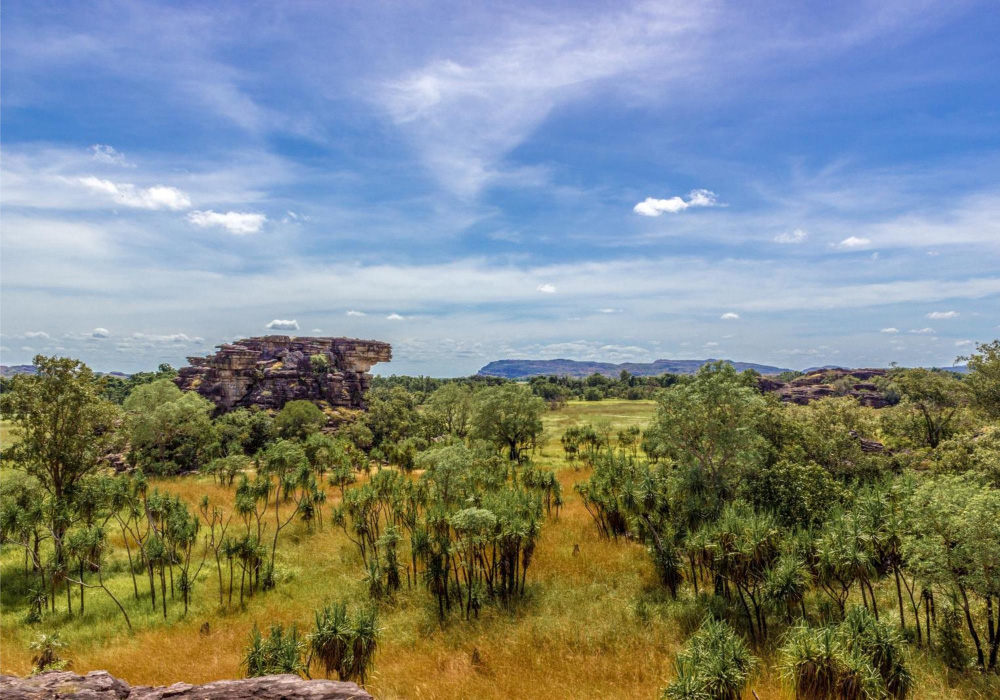
Must-see locations
While the entire Outback is worth exploring, several locations stand out for their natural grandeur and cultural importance.
Here are a few must-visit locations in the Outback:
- Uluru: A UNESCO World Heritage Site, also known as Ayers Rock, Uluru is a massive sandstone monolith in the heart of the Northern Territory. It is sacred to the Indigenous Anangu people and offers breathtaking views, especially at sunrise and sunset.
- Kings Canyon: Located in Watarrka National Park, Kings Canyon features towering red rock cliffs and lush palm-filled crevices. The Rim Walk is a popular trail offering panoramic views.
- Coober Pedy: This underground town in South Australia is famous for its opal mining. Visitors can explore underground homes, shops, and even churches.
- The Kimberley: This region in Western Australia is known for its rugged landscapes, including the Bungle Bungles, Horizontal Falls, and ancient rock art sites.
Visiting these spots helps deepen your understanding of the Outback's culture and natural environment.
Even lesser-known areas like the Painted Desert or the vast Tanami Track can lead to unexpected discoveries. It’s not always about ticking off tourist highlights—it’s about following the road wherever it may lead.
Photographing the beauty
Photographers are drawn to the Outback for its raw textures and cinematic light. The endless vistas and vivid colours provide compelling backdrops for any lens.
Here are some tips for photographing the beauty of the Outback:
- Golden hour: Get out there during the golden hours of sunrise and sunset. The soft light really brings out the natural colours and textures.
- Use a tripod: A tripod is your best friend for steady shots, especially in low light. It’s also great for nighttime captures.
- Play with angles: Experiment with different perspectives—shoot low to the ground to exaggerate scale or go wide to capture the sweeping expanse of a desert vista.
- Include people for scale: A single figure standing before a massive rock or dune can give viewers a sense of the landscape's grandeur.
- Go beyond the obvious: Don’t just aim for the postcard-perfect shot. Look for the details—the cracked earth, the patterns in the sand, or the way the wind shapes the grass.
The Outback is photogenic in every light, season, and mood. Whether you snap with a phone or a professional DSLR / mirrorless camera, you'll come away with images that tell powerful stories of adventure, solitude, and awe.
Wildlife encounters in the outback
From the iconic kangaroo to the elusive bilby, the wildlife in the Outback is as diverse as the land itself. Get ready to discover the wonders of the Australian Outback and the incredible creatures that call it home. This land is a treasure trove of unique species found nowhere else on Earth. Its harsh environment has led to the evolution of animals perfectly adapted to the arid conditions.
- Kangaroos and wallabies: These iconic marsupials are a common sight in the Outback. With their powerful hind legs, kangaroos can cover vast distances. Wallabies, on the other hand, are smaller and prefer rocky terrains.
- Emus: The second-largest bird in the world, emus are flightless but can run at impressive speeds. They travel long distances in search of food and water.
- Bilbies: These nocturnal creatures are known for their long ears and burrowing habits. They play a crucial role in the ecosystem by aerating the soil.
- Thorny Devils: These small lizards have a fearsome appearance and spiny skin. They have a unique way of collecting water through their skin grooves.
Conservation efforts across Australia aim to protect these species through wildlife reserves, breeding programs, and land restoration projects.
Cultural tapestry of the Outback
Exploring the Australian Outback is not just about the stunning landscapes and unique wildlife. The cultural significance of this vast region is equally captivating. The Outback is a living museum rich in history and traditions that have been preserved for thousands of years. Understanding the cultural importance of the Outback enhances the travel experience and offers a deeper connection to this incredible land.
Indigenous heritage
The Indigenous heritage of the Australian Outback is profound and deeply rooted in the history of the land. Aboriginal people have lived here for over 60,000 years, making it one of the oldest continuous cultures on Earth. Their connection to the land is spiritual and encompasses every aspect of life.
Dreamtime stories, or Dreaming, are a vital part of Indigenous culture. They explain the creation of the world and are passed down through generations. They are often depicted in rock art, which you can find across the Outback.
Key aspects of Indigenous heritage include:
- Rock art: Ancient paintings and carvings found in caves and on rock surfaces.
- Dreamtime stories: Mythical tales explaining the creation of the world and life.
- Traditional practices: Hunting, gathering, and ceremonies that honour the land and ancestors.
Visiting sites like Uluru and Kakadu National Park provides insight into these traditions. Guided tours led by Indigenous people offer a unique perspective and are highly recommended for a deeper understanding of the culture.
Local traditions
Local traditions in the Outback blend Indigenous customs with the practices of the settlers who arrived later. These traditions are a testament to the resilience and adaptability of the people who call the Outback home.
Some notable local traditions include:
- Stockman culture: The life of cattle and sheep herders is a significant part of Outback history. Their stories and skills are celebrated in events like the Birdsville Races and the Camooweal Drovers Festival.
- Country music: The Outback has a rich country music scene, with festivals like the Tamworth Country Music Festival attracting visitors from all over.
- Bush tucker: The traditional foods of the Outback, including native plants and animals, are a unique culinary experience. Learning about bush tucker is a great way to connect with the land.
Local festivals and events are great opportunities to experience these traditions firsthand. They showcase the community spirit and the pride locals have in their heritage. Participating in these events allows travellers to immerse themselves in the culture and make lasting memories.
Outdoor adventures
The Outback is a natural playground for adventurers. Whether you prefer solo treks or guided journeys, its wilderness offers challenges and rewards in equal measure. Experience nature at its best. Let's explore some exciting activities.
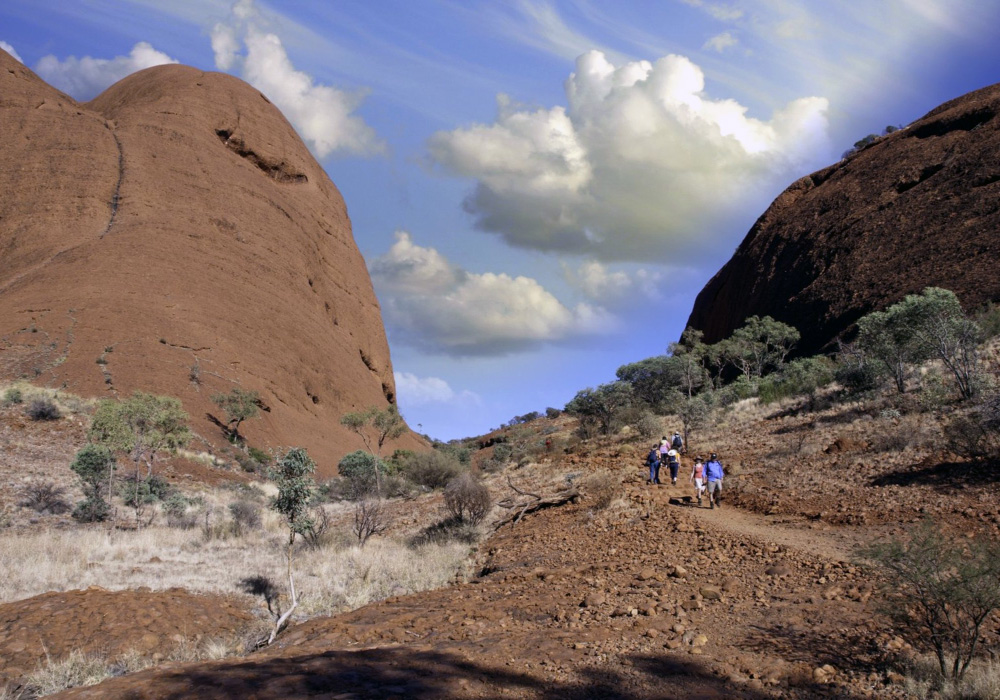
Hiking trails
Hiking in the Australian Outback is a must. The trails vary in difficulty. You'll find the perfect path whether you're a beginner or an expert. Here are some popular trails:
- Larapinta Trail: This 223-kilometre trail offers stunning views of the West MacDonnell Ranges and is perfect for experienced hikers.
- Kings Canyon Rim Walk: This 6 km walk takes you around the rim of Kings Canyon. The views are breathtaking and ideal for intermediate hikers.
- Uluru Base Walk: This 10-kilometer walk circles the base of Uluru. It is great for beginners because it allows you to see ancient rock art.
These trails offer unique experiences, each with its own charm. The Outback's beauty is unmatched, and hiking is the best way to explore it.
Camping spots
Camping in the Outback is an adventure. The remote locations are perfect for stargazing. Here are some top camping spots:
- Devils Marbles Conservation Reserve: This spot is famous for its large boulders, which make it perfect for photography. The facilities are essential, but the views are worth it.
- Ormiston Gorge: This spot offers a swimming hole. The scenery is stunning. It has facilities like toilets and showers. It is great for families.
- Mount Remarkable National Park: This park offers diverse landscapes. You can see wildlife and enjoy bushwalking. It has camping facilities and picnic areas.
Camping in the Outback is a unique experience. The solitude and beauty are unparalleled. These spots offer the best of nature. Enjoy peaceful nights and vibrant days.
Best time to visit
The Australian Outback has extreme weather conditions. Choosing the right time to visit can make a big difference. The best time is during the cooler months, from April to September.
During this period, daytime temperatures are more manageable, ranging from 20°C to 30°C (68°F to 86°F). Nights can be cold, so be prepared for temperatures dropping to 5°C (41°F).
Here are some key points to consider:
- April to September: Cooler temperatures, less rainfall, and fewer insects.
- October to March: Hot temperatures, potential for heavy rains, and more insects.
The table below provides a quick overview of the weather conditions:
| Month | Average High (°C) | Average Low (°C) | Comments |
|---|---|---|---|
| April | 29 | 15 | Pleasant weather |
| May | 25 | 11 | Cool and dry |
| June | 22 | 7 | Cold nights |
| July | 22 | 6 | Coldest month |
| August | 25 | 9 | Warming up |
| September | 29 | 13 | Comfortable weather |
Road trips across the Outback
Road-tripping through the Outback is one of the best ways to explore its vastness. These routes provide access to hidden gems and classic landmarks. Let's explore popular routes that make these road trips extraordinary.
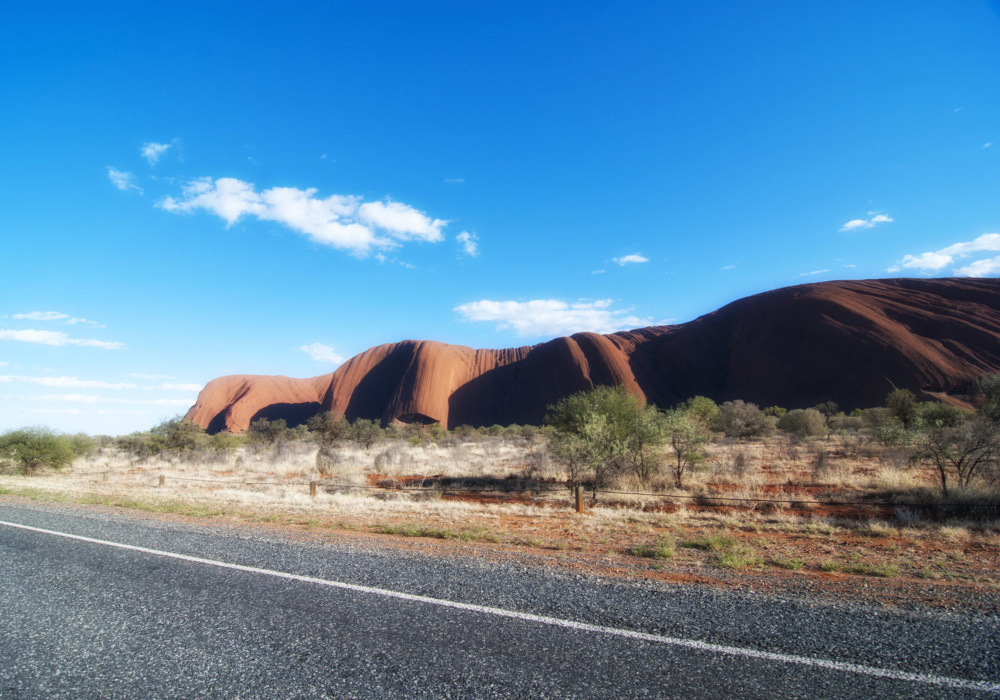
Here are some popular routes:
- Stuart Highway: This route stretches from Darwin to Adelaide, covering over 2,800 kilometres. It takes you through the heart of the Outback, offering stunning landscapes and historic sites.
- Great Central Road: Connects Western Australia with the Northern Territory. This remote and rugged route is perfect for those seeking adventure and solitude.
- Savannah Way: This 3,700-kilometer route spans from Cairns to Broome and offers diverse scenery, from tropical rainforests to arid savannahs.
- Gibb River Road: Located in the Kimberley region, this 660-kilometer route is famous for its dramatic gorges, waterfalls, and ancient rock art.
- Explorers Way: Running from Adelaide to Darwin, this route follows the trail of early explorers. It passes through iconic destinations like Alice Springs and Uluru.
Here's a summary of these routes in a table:
| Route | Distance (km) | Highlights |
|---|---|---|
| Stuart Highway | 2,800 | Darwin to Adelaide: Dramatic Desert Landscapes |
| Great Central Road | 1,100 | Remote, rugged scenery |
| Savannah Way | 3,700 | Tropical rainforests, arid savannahs |
| Gibb River Road | 660 | Gorges, waterfalls, rock art, and remote beauty |
| Explorers Way | 3,000 | Alice Springs, Uluru |
Conclusion: A journey into the heart of Australia
The Australian Outback is more than just a destination—it’s an experience that challenges, delights and transforms. Its vast red deserts, iconic landmarks, and resilient ecosystems provide a raw, unfiltered look at nature’s power and beauty. From the haunting quiet of the Simpson Desert to the spiritual presence of Uluru, every place tells a story waiting to be discovered.
But beyond the landscape lies a deeper connection: to the cultures that have called this land home for millennia, the wildlife that thrives against the odds, and the sense of freedom that only comes from standing in the middle of nowhere with everything ahead of you. Whether you’re hiking, camping, photographing, or simply watching the stars, the Outback has a way of changing the way you see the world—and yourself. It’s not just a journey through Australia’s interior but a journey into the soul of a continent.



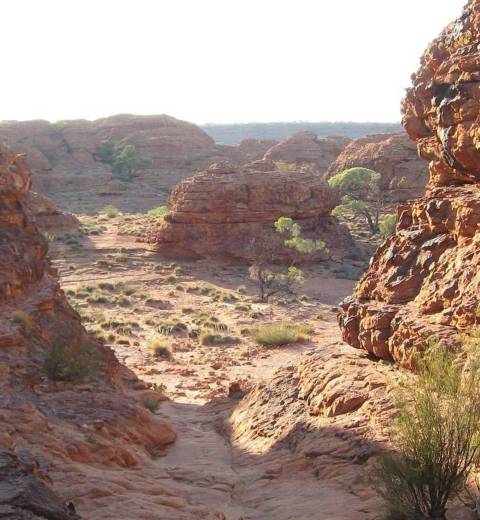
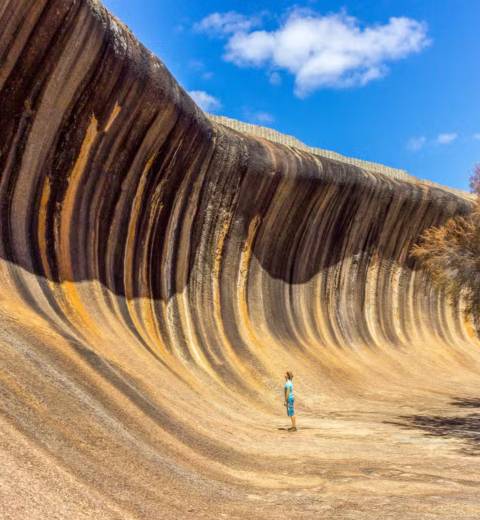

Comments powered by CComment